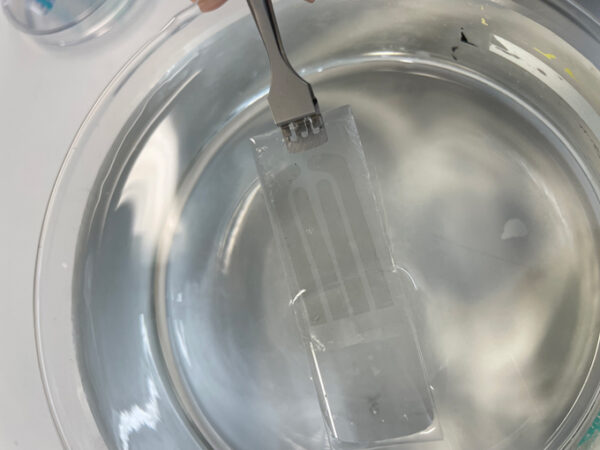Some tattoos truly make the heart go pitter-patter.
In rats, a graphene “tattoo” stuck to the heart could treat an abnormally sluggish beat. Like a futuristic pacemaker, the device delivered electrical signals that kept the heart pumping properly, scientists report online March 25 in Advanced Materials.
The electronic device is currently a proof of concept, but a version for use in human hearts could be ready for testing within five years, estimates Igor Efimov, a cardiovascular engineer at Northwestern University in Chicago.
Efimov and his colleagues have worked for years creating implantable devices that conform to the body. A main challenge is how to marry rigid electronics with soft, sometimes throbbing tissues. For most current pacemakers, doctors thread electrodes on long wires through a vein inside the heart. Every time the heart beats, some 100,000 times per day, the wires flex. Enough flexing, and the device eventually breaks, Efimov says. One solution is to use ultrathin materials that ride along with the heart’s movements, like plastic wrap clinging to quivering Jell-O.
In 2021, Efimov saw something that looked promising: a paper on graphene devices applied to the skin like temporary tattoos. Unlike the metal components often used in electronics, graphene is “atomically thin,” says Dmitry Kireev, a biomedical engineer at the University of Texas at Austin who developed the graphene tattoos.

Graphene — a single layer of carbon atoms arranged in a honeycomb pattern — is an appealing material for biomedical use, says Nai-Chang Yeh, a Caltech physicist who was not involved in the work (SN: 3/14/14). “Graphene is very flexible, it’s biocompatible, it’s highly transparent, it’s highly conductive and it’s mechanically strong,” she says.
But Kireev had never placed graphene tattoos on heart tissue before. Efimov contacted him and said, “Well, would you like to try? We can help.” The researchers teamed up and tested the devices in experiments on mouse hearts and inside living rats. In the rats, the heart tattoo could correct an irregular beat by sending pulses of electricity to the organ, the team reports.
The tattoos sandwich a transparent layer of graphene between sheets of stretchy silicone and ultrathin polymer. Gold tape connects the graphene to wires that run to a power source, which sends electricity through the device.
Future versions of the tattoo will be wireless, Efimov says, perhaps using a tiny antenna to pick up electrical signals from an external device placed on a person’s chest. And one day, Efimov envisions graphene electrodes the size of rice grains injected into heart muscle. Such miniature equipment could perform pacemaker duties without the typical clunky components.
That all might sound like science fiction, but the technology is almost here, Efimov says. “Now’s the time to develop it.”
For all the latest Technology News Click Here
For the latest news and updates, follow us on Google News.
